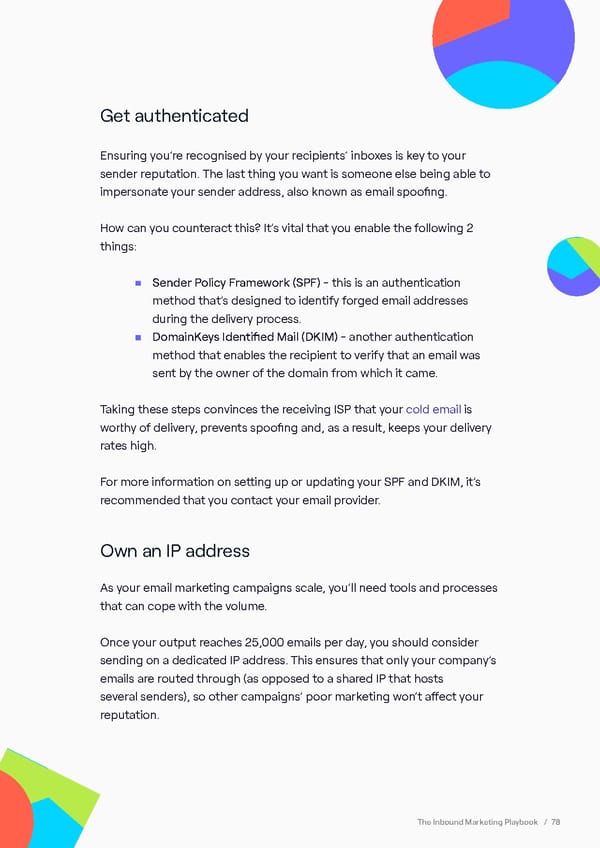Get authenticated Ensuring you’re recognised by your recipients’ inboxes is key to your sender reputation. The last thing you want is someone else being able to impersonate your sender address, also known as email spoofing. How can you counteract this? It’s vital that you enable the following 2 things: • Sender Policy Framework (SPF) - this is an authentication method that’s designed to identify forged email addresses during the delivery process. • DomainKeys Identified Mail (DKIM) - another authentication method that enables the recipient to verify that an email was sent by the owner of the domain from which it came. Taking these steps convinces the receiving ISP that your cold email is worthy of delivery, prevents spoofing and, as a result, keeps your delivery rates high. For more information on setting up or updating your SPF and DKIM, it’s recommended that you contact your email provider. Own an IP address As your email marketing campaigns scale, you’ll need tools and processes that can cope with the volume. Once your output reaches 25,000 emails per day, you should consider sending on a dedicated IP address. This ensures that only your company’s emails are routed through (as opposed to a shared IP that hosts several senders), so other campaigns’ poor marketing won’t affect your reputation. The Inbound Marketing Playbook / 78
 The No Fluff Guide to Inbound Marketing Page 80 Page 82
The No Fluff Guide to Inbound Marketing Page 80 Page 82